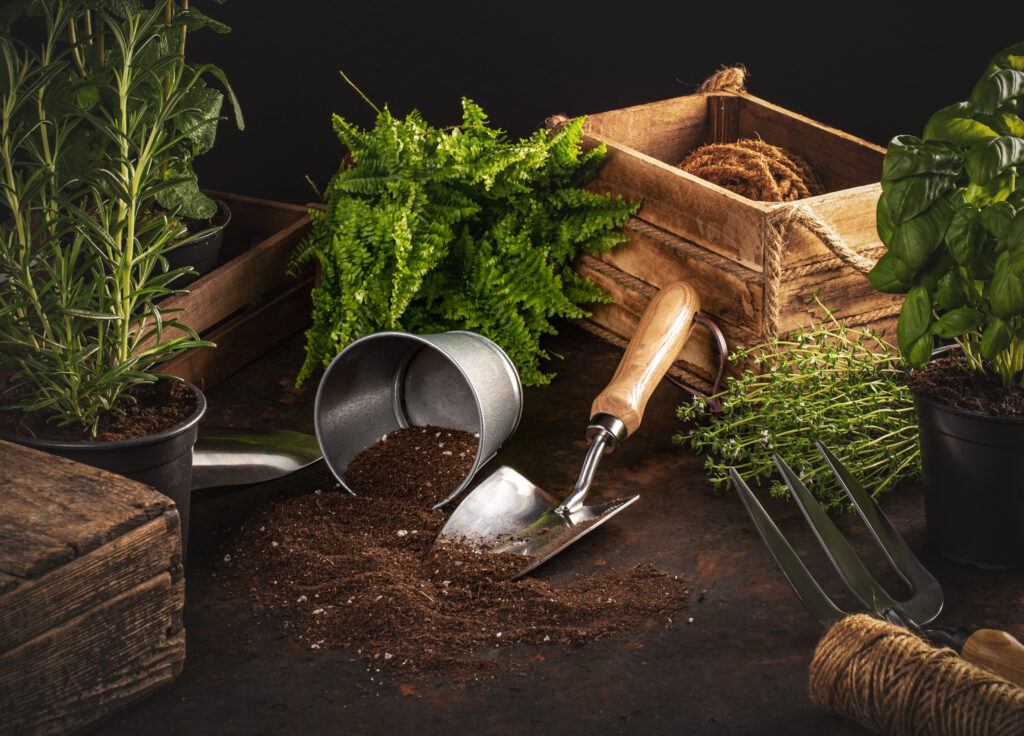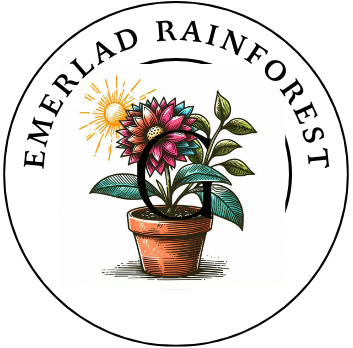
Container gardening offers numerous benefits for outdoor spaces, including space-saving, improved soil control, pest and disease resistance, and the ability to move plants to optimal locations. Container gardening is a fantastic way to grow plants in small spaces like patios or balconies—and even fits beautifully into small cottage gardens. It is also aesthetically pleasing and can be particularly useful in limited outdoor areas or where soil quality is poor.
The first benefit we’ll discuss is space efficiency. If you’re living in a cozy apartment or dealing with a limited backyard, containers allow you to create a vibrant garden without sprawling across unnecessary ground. Just a small patio or balcony can transform into a lush oasis packed with greenery.
Mobility is another big draw. When dealing with unpredictable weather, the ability to swiftly relocate plants ensures they thrive regardless of external conditions. You can shuffle your pots indoors during a surprise frost or arrange them neatly to bask in the spring sun. This flexibility helps ensure optimal plant health all year round.
Designing your container garden lets you personalize the look and feel, adding touches of color and creativity that suit your style. Think of it like painting a canvas; each plant and pot becomes a stroke of art, helping brighten and beautify your space.
Finally, container gardening isn’t just about looks. It’s a wonderful way to grow a diverse range of plants, from fragrant flowers to delicious veggies. This versatility combines practicality with pleasure, giving you a functional and flourishing garden setting. And don’t forget the butterflies, bees, and birds who will be attracted to 10 plants for full sun-these pollinators are so important to our environment. Whether it’s a pot of fresh basil or a cascading display of petunias, containers make it possible.
Picking the Perfect Containers for Your Garden

Choosing the right containers is crucial for a successful garden. The material of the container can impact your plant’s health and growth. Whether you go with clay, plastic, metal, or wood, each comes with its pros and cons. Clay pots, for instance, offer breathability but can dry out quickly, while plastics are lightweight and easy to move around but might retain too much moisture.
Size and drainage play significant roles in container selection too. Bigger isn’t always better. Choose a size that gives your plant’s roots enough room without drowning them in too much space. Drainage is vital—without it, potted plants are prone to root rot. Make sure any pot you pick has holes at the bottom to keep water flowing out efficiently.
A container’s design is important, especially if you’re aiming for a certain look or vibe in your garden. It’s about balancing style with practicality. This might mean picking a brightly colored pot to add a pop of flair or a sleek, neutral design to keep things looking neat and tidy. Finding that sweet spot makes your garden not only functional but also a joy to look at.
Lastly, consider the durability of your containers. Investing in high-quality options might cost a bit more upfront, but they’ll last longer and save you money in the long run. Look for materials that can weather the elements and hold up through seasons to keep your garden thriving without constant replacements.
Choosing the Right Soil and Potting Mix

Getting the potting mix right is as essential as picking the perfect container. This mix isn’t just about holding your plants up; it ensures they get the nutrients, air, and moisture they need. A good potting mix helps with drainage and keeps roots well-aerated, which is key to healthy plant growth.
Let’s break down the components: peat moss helps retain moisture, perlite boosts drainage, and vermiculite aids in aeration. These ingredients strike a balance that’s crucial for container plants, as soil that’s too dense can suffocate roots while anything too loose may not hold enough nutrients.
Adding organic amendments like compost or worm castings enriches the mix, giving plants a nutrient boost. Fertilizers are also worth considering to replenish essential elements over time, especially in containers where nutrients wash away steadily. Just be mindful not to over-fertilize; balance is critical.
Checking the health of your potting mix is simpler than it sounds. Healthy soil has a balanced moisture feel, a mild earthy smell, and doesn’t clump too tightly. If your mix feels dry and crumbly or smells sour, it might be time for a refresh. Paying attention to these clues goes a long way in keeping your container plants content.
Selecting the Best Plants and Enhancing Garden Design

When choosing plants for container gardening, consider your local climate and the hardiness zones to ensure your vegetation thrives. This starts with understanding environmental factors like temperature fluctuations and humidity levels common in your area, which helps in selecting the most suitable plant varieties.
Evaluating the sunlight available in your chosen spot is also crucial. Don’t be afraid to get creative—try mixing in shade garden plants for depth and variety in covered patios or partial-sun zones. Make sure your plants are getting the light they need to flourish by observing how sunlight moves across your space throughout the day.
Selecting plants based on personal preferences allows for a more enjoyable gardening experience, whether you’re drawn to vibrant colors, specific bloom times, or certain heights. Mixing edibles like basil and mint with ornamental flowers can both beautify and bring function to your garden.
The thriller, filler, and spiller method is a handy guiding principle for container design. Start with a tall, eye-catching ‘thriller’ plant, add ‘filler’ types to create body and fullness, and finish with ‘spiller’ varieties that cascade over the pot’s edges for a cascading effect. This method adds depth and direction to your container arrangements.
Gardening doesn’t stop at planting. Efficient care, including regular watering , trimming away dead foliage, and addressing pests promptly, is essential for maintaining a thriving garden. Consistent monitoring and little acts of care keep your garden looking its best.

Hi Kathryn,
I read your informative article with interest, as I am considering adding more plants to my balcony. I currently have a money tree and a couple of succulents. My balcony has an easterly aspect, so it gets the morning sun. I would like to add some herbs such as coriander, lemon grass, and chillies. I also like cacti, as they are low-maintenance.
I am a newbie gardener, so your articles cover the basics of what I should know. I have bookmarked your blog so I can refer to it in future.
Cheers John
John,
I’m glad you enjoyed the article on outdoor container gardening. When I was first out on my own, container plants were the only plants I could grow living in an apartment. Gardeners grow everything in containers from herbs to orchids.
And I liked your comment about cacti because they were the only plants I grew during my teenage years.
Hi Kathryn,
This was such a refreshing and inspiring read! As someone who doesn’t have a big backyard, I truly appreciate the beauty and practicality of outdoor container gardening. I love how you described it as “painting a canvas” — that really resonated with me! It’s empowering to know we can still create a lush and functional garden, even in a small space.
Your tips on choosing the right containers and potting mix were super helpful, especially the reminder about drainage and soil health — I’ve definitely made the mistake of using containers without holes before (oops!).
I also loved your breakdown of the thriller, filler, and spiller method — that gives such a lovely structure to the design process. Looking forward to putting some of your ideas into practice this weekend!
Thanks for such a well-written and encouraging post.
Alyssa,
Your comments are so kind; I hope you are encouraged to create your lush and functional garden space. Happy Gardening!
Outdoor container gardening, from a gentle, faith-filled perspective, is such a sweet way to connect with nature and care for God’s beautiful creation. It’s like planting a little piece of hope and watching it bloom with love and patience. My sister always says that nature has a way of bringing peace—there’s something so calming about watching things grow slowly and naturally. The soil, rich and nourishing, reminds me of our own spiritual growth, deeply rooted and nurtured over time. The pots, like our bodies, provide the perfect space to hold and protect what’s growing inside. It’s not just about growing plants, but about nurturing life, learning from it, and sharing the joy and beauty of what you’ve grown with others. It’s a reminder that, with time and care, even the smallest seeds can bring forth great blessings.
Linda,
There is no place I’d rather be than among my garden. I agree it offers such peace and hope, and it doesn’t matter if it is a large outside garden or an outside container garden, the experience is the same.
This was such an informative read—container gardening really does open up so many possibilities, no matter how much (or how little) outdoor space you have! I love how you broke down not only the practical aspects (like choosing the right potting mix and ensuring proper drainage) but also the design tips. The “thriller, filler, spiller” method is such a smart way to create containers that look intentional and balanced.
Overall, this article makes container gardening feel approachable and exciting, especially for beginners who might feel intimidated by traditional in-ground gardens. Thanks for sharing such detailed insights—I’m feeling inspired to refresh my patio with some new pots!
Linda,
Thank you so much for your comments, and I’m so glad you appreciated my article. Container gardening is where I got my start, so to speak. That was when I didn’t own my own property and didn’t want to or wasn’t allowed to plant anything in the ground. We don’t have to lose out on color an beauty when we can enjoy it in container gardens.